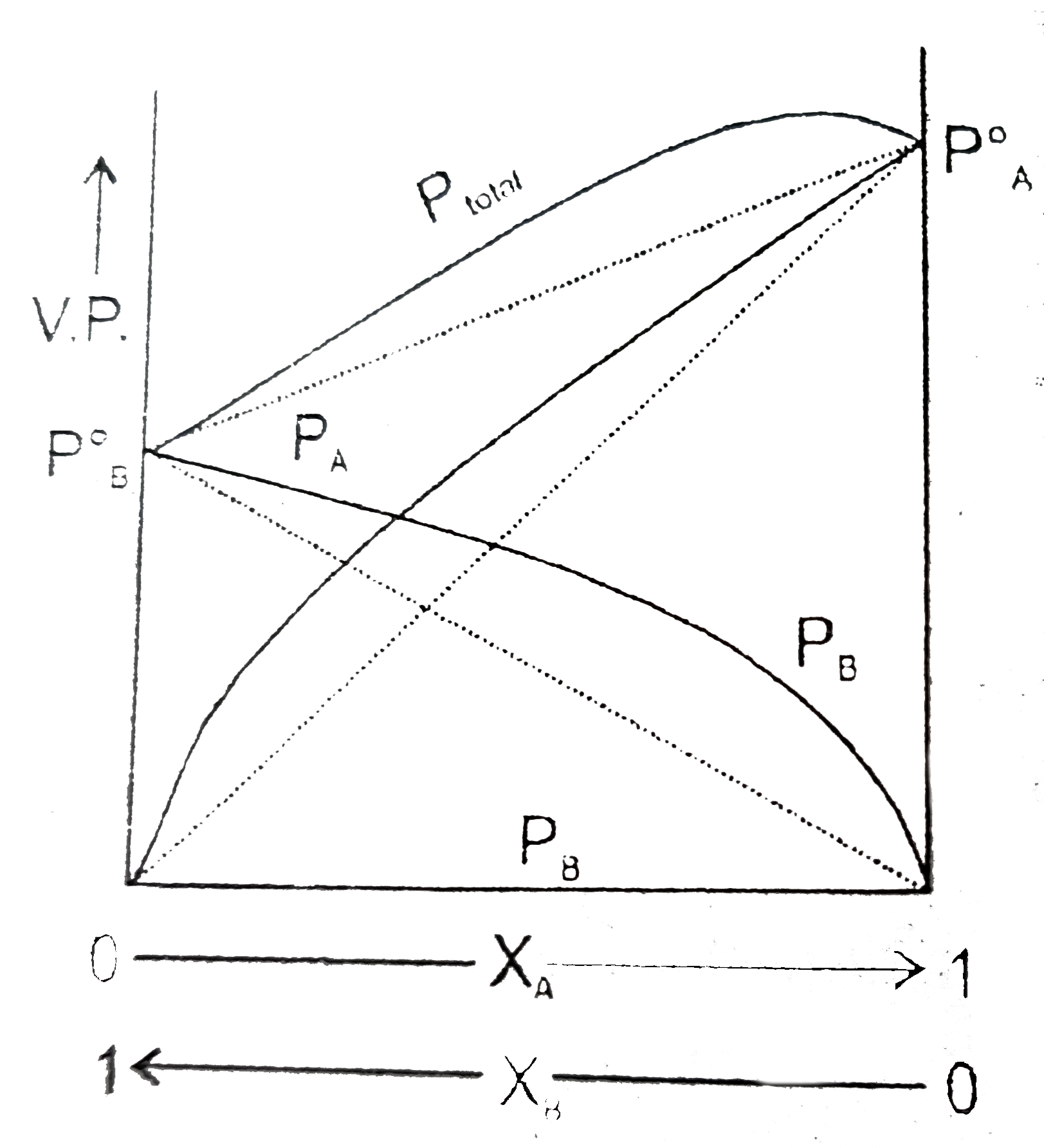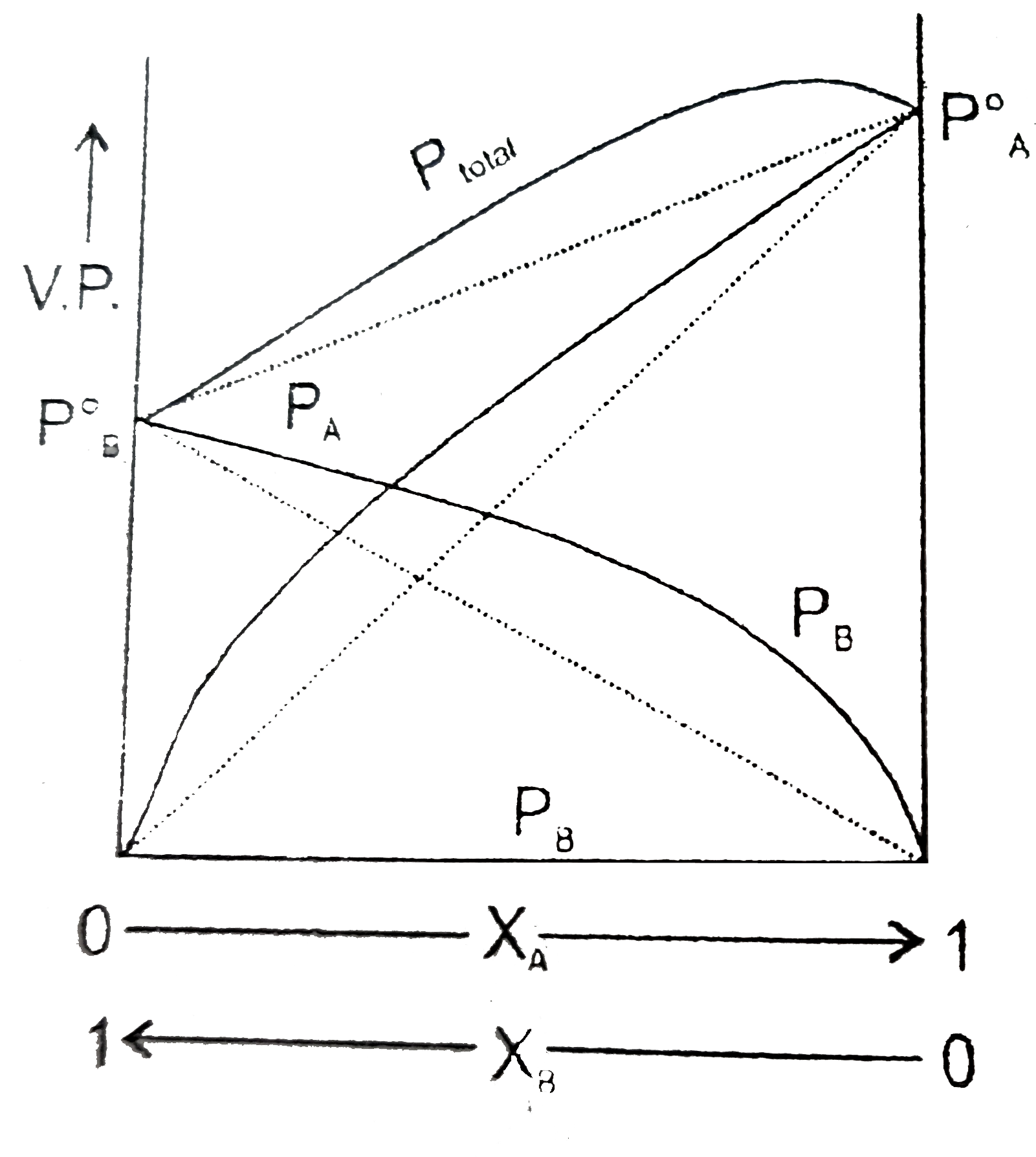Complete Solutions to EXERCISE-2(PART-4) of chapter SOLUTIONS of Class 12 book with complete answers and questions
| Class 12 | CHEMISTRY |
| Chapter | SOLUTIONS |
| RESONANCE | EXERCISE-2(PART-4) |
| Number Of Questions | 4 |
| Academic Year | 2023-24 |
Answer the question (given below) which are based on the following diagra.

Consider some facts about the above phase diagram :
Vapour pressure diagram for real solutions of two liquids `A` and `B` that exhibit a positive deviation from Raoult's law. The vapour pressure of both `A` and `B` are greater than predicted by Raoult's law. The dashed lines lines represented the plots for ideal solutions.
`A`: This is observed when `A...B` attraction are greater than average of `A...B` and `B...B` attraction:
`B`: `DeltaH_("mix")=+ve,DeltaV_("mix")=+ve`
`C`: Boiling point is smaller than expected such that vaporisation is increased
`D`: Mixture is called azeotropic mixture
Select correct facts02:12View SolutionAnswer the question (given below) which are based on the following diagra.

Consider some facts about the above phase diagram :
Vapour pressure diagram for real solutions of two liquids `A` and `B` that exhibit a positive deviation from Raoult's law. The vapour pressure of both `A` and `B` are greater than predicted by Raoult's law. The dashed lines lines represented the plots for ideal solutions.
Total vapour pressure of mixture of `1` mol of volatile component `A(P_(A)^(@)=100 mmHg)` and `3` mol of volatile component `B(P_(B)^(@)=60 mmHg)` is `75 mm`. For such case:02:58View SolutionAddition of non-volatile solute to a solvent always inceases the colligative properties such as osmotic pressure, `DeltaP, DeltaT_(b)` and `DeltaT_(f)`. All these colligative properties are direactly propertional to molality if solutions are dilute. The increase in colligative properties on addition of non-volatile solute is due to incease in number of solute particles.
For different aqueous solutions of `0.1 N NaCl, 0.1 N` urea, `0.1 N Na_(2)SO_(4)` and `0.1 N Na_(3)PO_(4)` solution at `27^(@)C`, the correct statement are :
(P) The order of osmotic pressure is, `NaCl gt Na_(2)SO_(4) gt Na_(3)PO_(4) gt ` urea
(Q) `pi = (DeltaT_(b))/(K_(b)) xx ST` for urea solution
(R) Addition of salt on ice increases its melting point
(S) Addition of salt on ice brings in melting earlier08:03View SolutionAddition of non-volatile solute to a solvent always inceases the colligative properties such as osmotic pressure, `DeltaP, DeltaT_(b)` and `DeltaT_(f)`. All these colligative properties are direactly propertional to molality if solutions are dilute. The increase in colligative properties on addition of non-volatile solute is due to incease in number of solute particles.
For different aqueous solutions of `0.1 N NaCl, 0.1 N` urea, `0.1 N Na_(2)SO_(4)` and `0.1 N Na_(3)PO_(4)` solution at `27^(@)C`, the correct statement are :
`1g` mixture of glucose and urea present in `250 mL` aqueous solution shows an osmotic pressure of `0.74` atm at `27^(@) C`. Assuming solution to be dilture, which are correct ?
(P) Percentage of urea in solute mixture is `17.6`
(Q) Relative lowering in vapour pressure of this solutions is `5.41 xx 10^(-4)`.
(R) The solution will boil at `100.015^(@)C`, if `K_(b)` of water is `0.5 K "molality"^(-1)`
(S) If glucose is replaced by same amount of sucrose, the solution will show higher osmotic pressure at `27^(@)C`
(T) If glucose is repalced by same amount of `NaCl`, the solution will show lower osmotic pressure at `27^(@)C`.08:03View Solution
EXERCISE-2(PART-4) questions and complete solutions for chapter SOLUTIONS of PHYSICAL, INORGANIC, AND ORGANIC CHEMISTRY of Class 12
